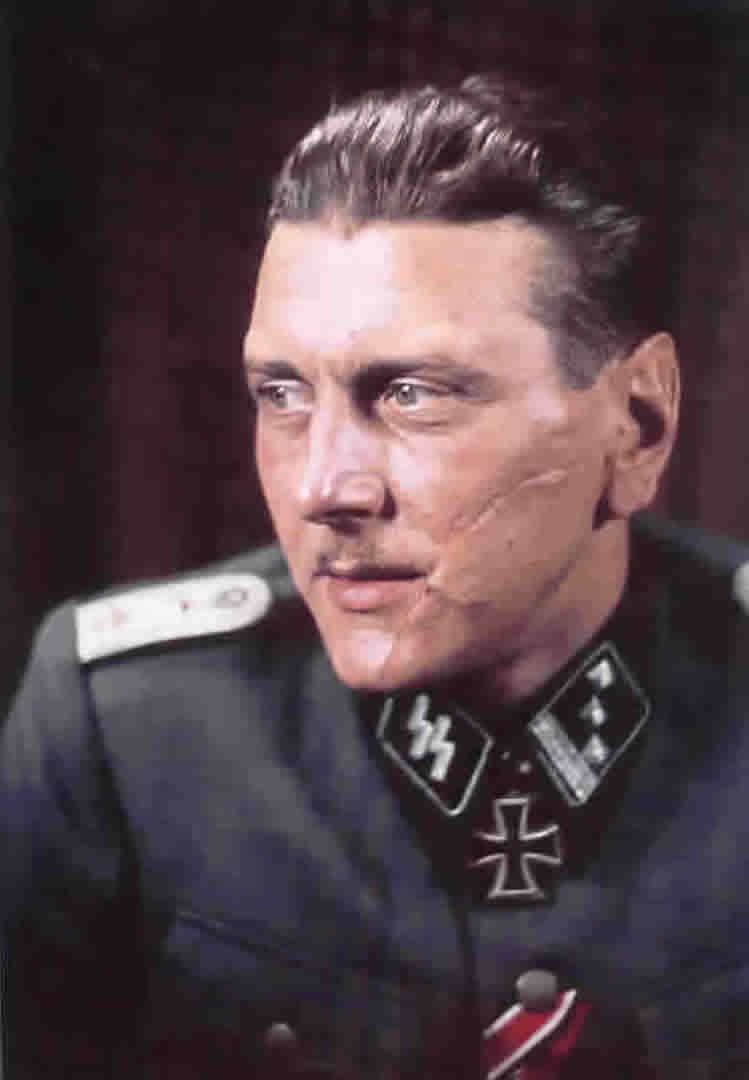April 18th, 2012

World War II produced a freshet of remarkable people who carried out astounding feats of bravado; it is surely impossible to select the most impressive from this long list of heroes and heroines. In this piece, I’d like to tell the tale of just one of these: Otto Skorzeny. he was a complicated man: an engineer by training, an ambitious member of the SS, he was apparently apolitical. He was certainly loyal to Hitler and the Nazis, but my impression is that his loyalties were opportunistic rather than political; in the 1950s he assisted the Israeli intelligence service, Mossad.
What makes Skorzeny noteworthy is his audaciousness, best evidenced in his two most successful operations: the rescue of Mussolini and the seizure of the Hungarian government headquarters. The first of these exploits took place on September 12th, 1943. Mussolini had been deposed and was being held prisoner in a mountaintop hotel that was accessible only by a cable car. Talk about impregnable! The plan was crazy: to crash-land several gliders on the mountaintop, overwhelm the guards, and then fly Mussolini out in a tiny airplane. The audaciousness of the plan was its saving grace; the guards were overwhelmed without firing a shot, and the tiny plane with Mussolini and Skorzeny aboard just barely avoided crashing on takeoff. Skorzeny was a hero.
The second exploit came towards the end of the war. The Russians were at the borders of Hungary, a German ally, and would soon begin their invasion. The Hungarian government, quite reasonably, entered into secret negotiations with the Red Army to surrender. The Germans got wind of this and wanted to prevent such a surrender, which would be catastrophic because the German armies in the Balkans would be cut off by a Hungarian surrender. But how to do so? If the Germans killed Admiral Horthy, the Hungarian dictator, the Hungarian Army would turn against the Germans. They couldn’t just blast their way into the capital building (an ancient castle in Budapest). They needed a way to capture the government headquarters without a fight.
Skorzeny’s solution was audacious. He assembled a small collection of tanks, trucks, and men, put the men in dress uniform, bedecked the tanks with flags and banners, and drove the parade down the main boulevard to the palace, with the tank commanders standing in their turrets saluting. The palace guards didn’t know what to make of this approaching parade. The Germans drove right up to the gates and then gunned their engines and smashed through. Before anybody realized what was happening, they had secured the castle. They deposed Admiral Horthy and installed a pliant dictator to run Hungary.
After the war, Skorzeny was tried for war crimes but the Allied lawyers couldn’t make anything stick; his methods were unconventional but not illegal. Skorzeny had never been involved in any of the atrocities so common among his colleagues. The worst accusation was that he had equipped two dozen men with American uniforms to sow chaos during the Battle of the Bulge. However, a sympathetic British agent testified that he had done exactly the same thing during his operations inside Germany. Skorzeny was acquitted.
During the 1950s and 1960s, Skorzeny ran a number of mercenary special-ops schemes, mostly involving training the locals in the techniques he had mastered during the war. He died of cancer in 1975.
